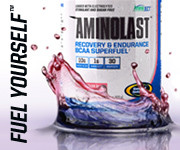In part 1 of this article I discussed the goals of strength and conditioning for Jiu-Jitsu, and how it was vitally important to match the needs of any sport to its programming. In this article, I’d like to give you some practical applications of these concepts with example exercises that will develop the attributes required for effective skill learning. The exercises detailed here are by no means extensive but they will give you a great, albeit somewhat alternative, way to approach your strength and conditioning.
I still recommend that people have a strong foundation in the big lifts – squat, deadlift, press and the Olympic lifts.
We’ve already spoken about both range-of-motion (ROM) and multi-planar movement. To refresh your memory, ROM refers to the movement produced by any given joint, or collection of joints, and we need to encourage full ROM. Multi-planar movement refers to moving the body through multiple planes of motion, as would naturally occur in competition.
Exercises That Encourage Full Range-of-Motion Movement
 The exercises recommended here will help to develop and maintain healthy range-of-motion and thus aid flexibility, application of power and agility.
The exercises recommended here will help to develop and maintain healthy range-of-motion and thus aid flexibility, application of power and agility.
- Overhead Squat
The overhead squat is an exercise that promotes lower body and core strength and is the gateway to the Snatch – another excellent exercise. Besides this, it is impossible to do the exercise without a healthy range of motion – especially in the hips and shoulders.
It can be performed as a warm up/mobility exercise with a dowel/broomstick (as pictured below), or weighted with an Olympic bar or various other implements.
Hold the bar, with straight arms, above the head (roughly above the shoulder blades). Actively shrug the shoulders and then squat as normal – making sure to keep the chest high and heels down.
- Snatch
If you have some proficiency in the Overhead Squat then the Snatch is a natural progression. One of the Olympic lifts (the other being the Clean and Jerk); it develops great power – especially in your ‘pulling’ muscles. A correctly performed Snatch requires full extension through the hip and shoulder, and this movement has great application to any athletic movement.
It is typically performed with an Olympic bar but also possible with dumbbells, kettlebells and other implements.
Start with a weight/bar on the ground. Holding onto the weight, explode powerfully upwards, extend fully at the hip and allow the bar to travel upwards and above your head to finish in the overhead squat position. The snatch is a very complex lift and you should speak to an Olympic lifting coach to learn it.
- Windmill
The Windmill is an exercise designed to improve core strength while standing and is also great for developing shoulder stability. The benefit of improving core strength in the standing position is that it has a specific impact on techniques such as standing grappling, clinches and throws.
Its ability to develop flexibility under load is of great importance. Moving through a high degree of range of motion (ROM) while under tension produces greater real world flexibility than many other stretching methods.


 Start with a weight in one hand, held overhead. Before you start this exercise turn your feet out at 45 degrees and slightly bend the knees. Using a smooth movement through the waist allow your body to bend down and reach towards the ground. This movement should come from the core and hips without using the knees. Once you have touched the floor - or your body is parallel to the floor - return to the starting position with an upright torso.
Start with a weight in one hand, held overhead. Before you start this exercise turn your feet out at 45 degrees and slightly bend the knees. Using a smooth movement through the waist allow your body to bend down and reach towards the ground. This movement should come from the core and hips without using the knees. Once you have touched the floor - or your body is parallel to the floor - return to the starting position with an upright torso.
In the pictures below I am performing the Windmill with a sandbag but the exercise can be done with any weighted implement.
Exercises That Increase Multi-Planar Proficiency
The exercises recommended here will help to improve your ability to move effectively through multiple movement planes. Our biggest concern is to try and reduce our sagittal (forwards and backwards) plane dominance. So we need to include strength and conditioning exercises that focus on movement and ‘stress’ in the Frontal (sideways) and Transverse (rotational) planes.
- Lateral Lunge
The lateral lunge is a lower body strengthening movement that will improve your ability to move laterally. It can be performed with bodyweight alone or with any weighted implement.
Stand with your feet parallel and take a big step sideways. As the foot lands, bend the knee (as you would in a squat). Allow the opposite leg to straighten; making sure that the foot stays flat.
- Windmill
I know it has been included as a full ROM exercise but it is also a great multi-planar exercise. Frontal movement through the hip and rotation about the shoulder, hip and spine make this a worthy exercise.
- Lateral Snatch/Landmine
The lateral snatch develops some of the similar benefits derived from the regular snatch but it is single handed and stresses the frontal plane. Any single handed exercise is useful as it will help to avoid any imbalances you may have. Whereas the ‘stress’ in a regular snatch will pull you forwards of backwards, the lateral snatch will force you to resist laterally.
Take hold of one end of an Olympic bar. Explode upwards in one powerful snatch movement so that the bar ends up above the head. The opposite end will remain on the floor, running parallel to your feet.
How Do I Include These In My Programming?
If you are not currently performing these exercises as part of your strength and conditioning programme then add them. Building proficiency in these movements is stage 1. With new movements like this, treat them as you would a skill element – encourage rest periods and high quality technique.
When you have developed a level of proficiency then you can add them to your regular programming as:
- Strength exercises (e.g. 5x5)
- Fight specific conditioning sessions (a mix of exercises with minimal rest periods at high intensity)
- Warm-up/mobility elements (e.g. prior to a skills session)
I hope you have enjoyed this alternative take on strength and conditioning for Jiu-Jitsu. I always view strength and conditioning as a tool for success and I think this is a useful way to construct your programming. Look at weaknesses and put elements in place to combat them. If you are interested in working with me then please get in touch.
Matthew Palfrey is a Strength and Conditioning Coach based in the UK, where he works with athletes, clubs and teams to maximise performance. He can be contacted via the MMA Strength & Conditioning Blog





